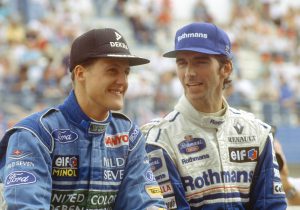Up Next

While waiting for the 2020 Formula 1 season to start, we’re revisiting some classic grands prix worthy of new attention. These will not be repeats of old articles, but fresh retrospectives of these events
The talk coming into the Monaco weekend was around two things.
Could Michael Schumacher and Ferrari extend their consecutive race-winning sequence at the start of the season to six and thereby set a new record?
And was Jarno Trulli’s future at Renault under threat? His contract was expiring this year with a team that had become increasingly focused around Fernando Alonso and team boss Flavio Briatore was supposedly not in any hurry to open negotiations.
If Ferrari was going to be beatable anywhere this season it was here where its weakness was likely to be its Bridgestone tyres. The Renault and BAR-Honda teams were in good shape to make use of the first-lap (ie qualifying) Michelin advantage, which only seems to increase the softer the compounds.
Monaco’s layout allowed the softest compounds of the season and furthermore played very strongly to the Renault’s superb rearwards-heavy traction. This was the perfect track for Renault, in other words.
Furthermore, a Paul Ricard test the previous week had brought a significant but surprising improvement to the car. Two struts between engine and tub had been added – and had transformed the feel of the car for Alonso and Trulli. The increase in beam stiffness gave them a feel for what the rear of the car was doing that had been lacking before – always previously their main criticism of the R24.
The struts had been part of the R23’s design to ease the vibration issues inherent to that car’s wide vee-angle engine but had been deleted from the R24, which has a much smoother, narrow vee engine.
But they had apparently been giving an unrealised benefit, in how directly the drivers could feel the car. With the struts fitted to the R24 for the first time, it was transformed.
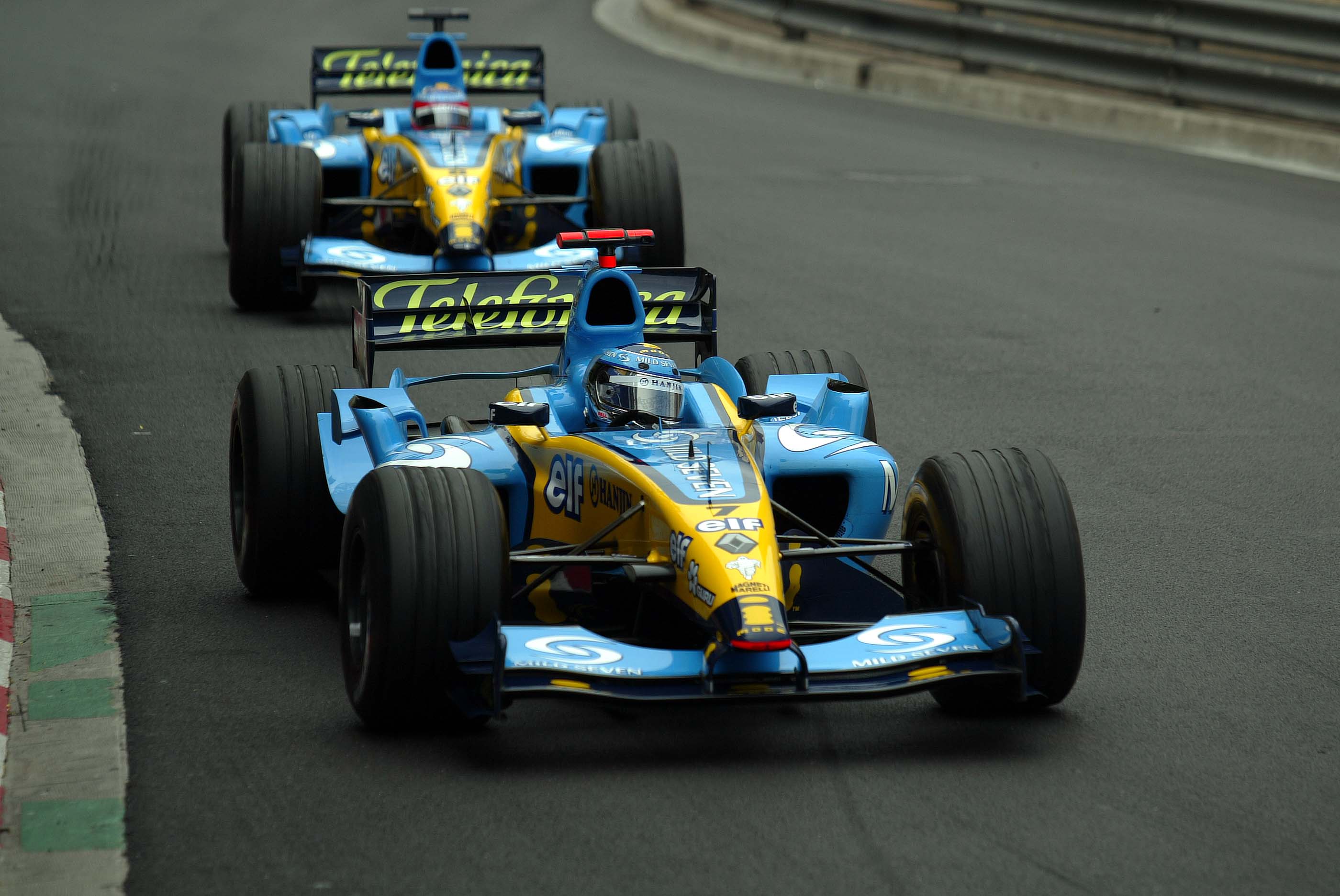
Ferrari and Bridgestone knew they were going to be up against it this weekend, knew that it was going to be very tough to establish a new record of six consecutive victories at the start of a season.
Schumacher’s victories in Australia, Malaysia, Bahrain, Imola and Barcelona equalled Nigel Mansell’s opening flurry of ’92 but would count for nothing here.
Accordingly, Bridgestone had developed the softest compound it dared. In testing it at Silverstone Sauber even gave up on using the full circuit, as it couldn’t possibly withstand a full lap before overheating into gripless uselessness.
But it just might hang on for long enough to give Michelin-matching grip at Monaco. Even if it then degraded spectacularly, if it could just get Ferrari onto the front row, they could dictate the race from there given the lack of passing places.
For that plan to work, it required both cars on the front row – because the Renault’s fantastic getaway performance would be almost guaranteed to put it in front of the Ferrari if it started from the same row.
Saturday morning practice, Schumacher headed the times on the super-soft Bridgestone – but only by thousandths of a second from Trulli’s Renault and Takuma Sato’s BAR-Honda.
Then there was the matter of Rubens Barrichello in the other Ferrari. He’d badly trailed Schumacher all weekend, just couldn’t get to a happy place with the car. The likelihood of him joining Schumacher to lock out the front row looked remote.
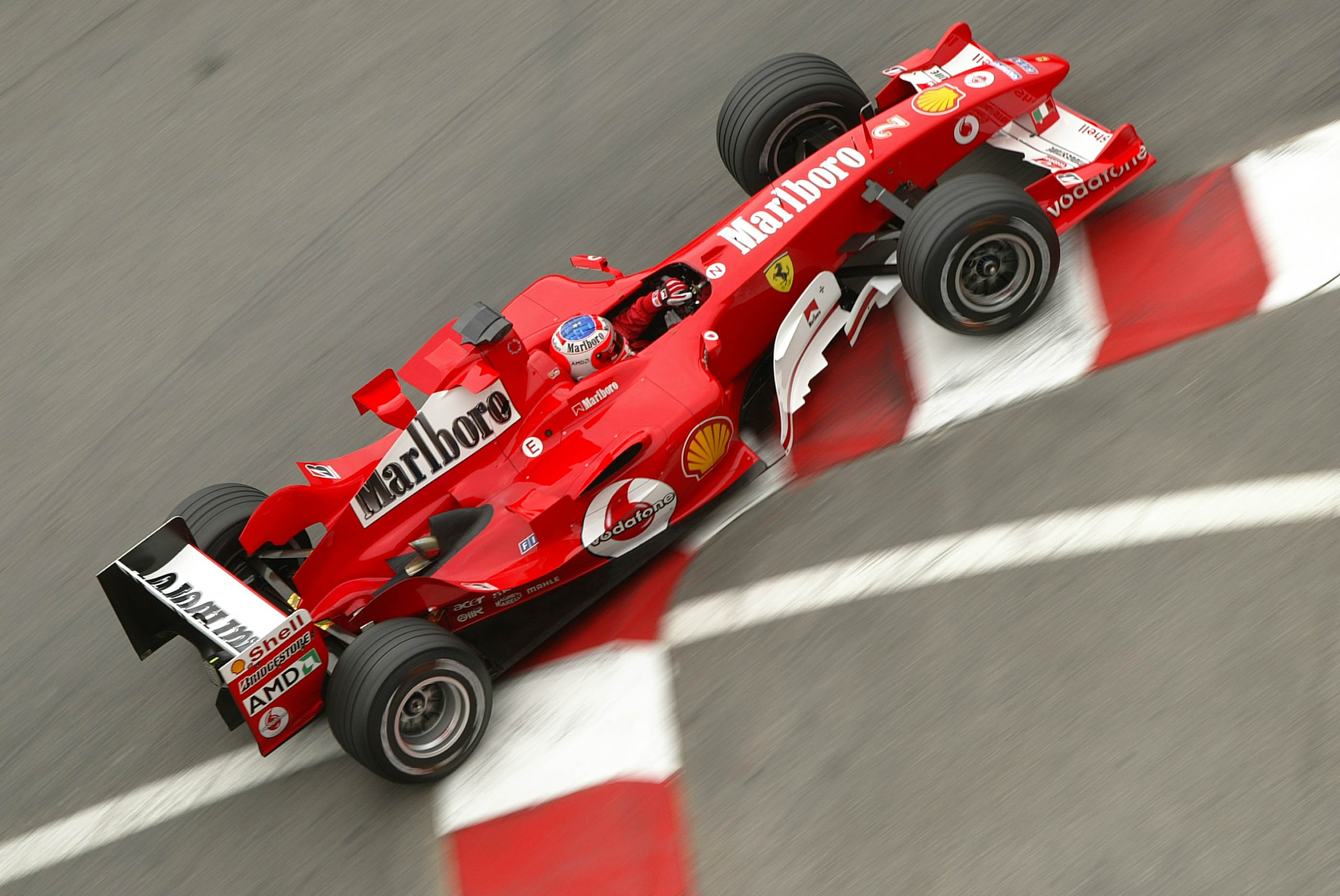
In light of this, technical director Ross Brawn made a change of plan. Ferrari would forsake the super-soft tyre, accept they weren’t getting pole – and instead run heavier, with a long enough first stint to give Schumacher clear track after all the others had stopped.
If he could get enough clean air laps to really wring the Ferrari’s neck, it might just be enough to jump him to the front after the first stops of what was set to be a two-stop race (the compounds were too soft for a one-stop to work). Enough fuel for 26 laps was put into Schumacher’s tank for single-lap qualifying.
At Renault, they put in enough for 23 laps (Trulli) and 24 (Alonso). BAR-Honda wasn’t confident it could quite live with the Renaults around here but to give itself a sporting chance, it gave Jenson Button enough for just 18 laps.
Trulli was in scintillating form in the Renault, revelling in the new levels of feedback provided by the innocuous tweak of the engine-chassis struts. At what is always a great circuit for him, he was untouchable, his 1m13.985s pole lap a full 0.5s faster than Alonso in the sister car. The was his first career pole.
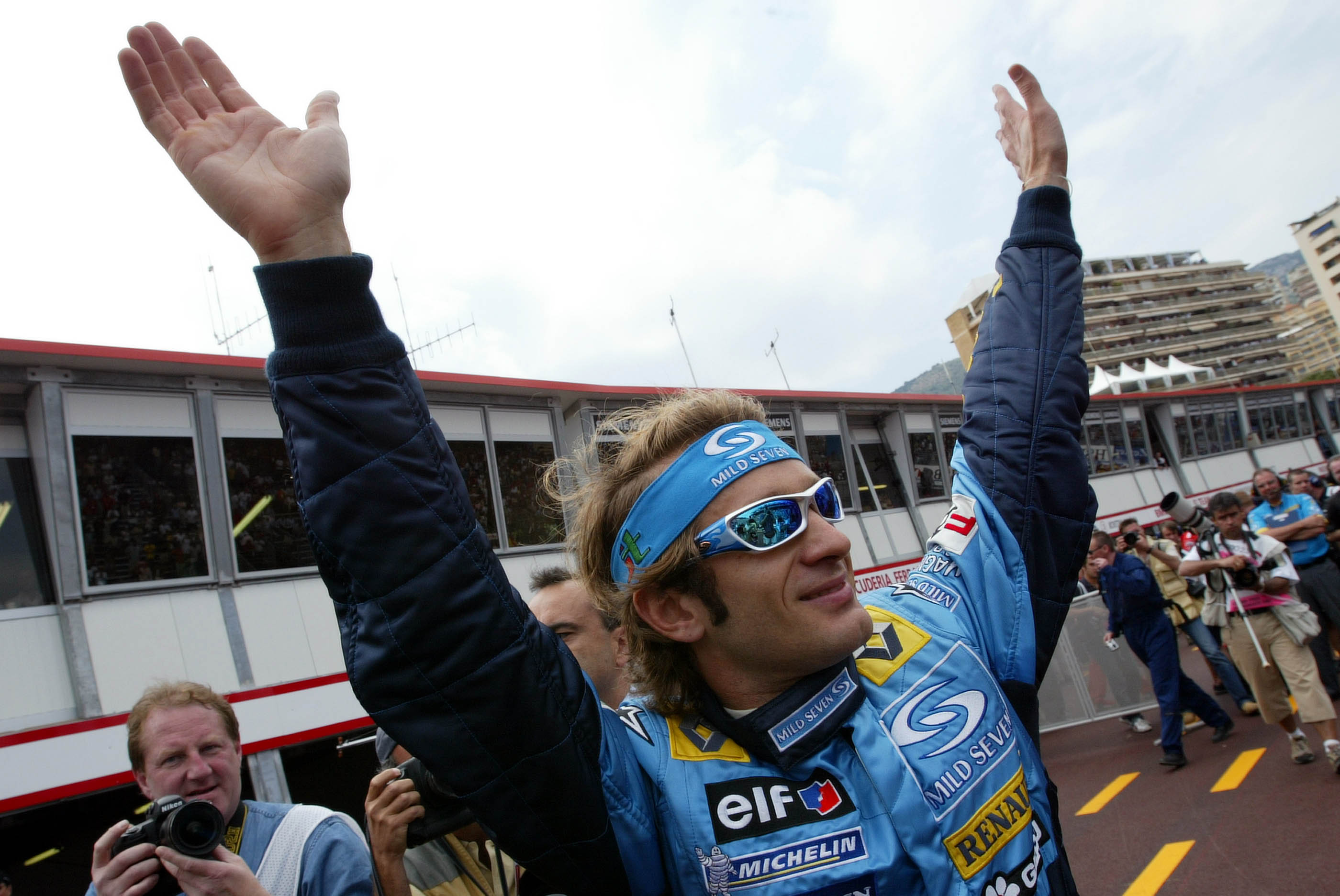
Slotting between the Renaults, a bare few hundredths faster than Alonso, was Button’s light BAR-Honda. Schumacher in the heavily-fuelled Ferrari was fourth-fastest, around 0.6s adrift of Trulli’s pole.
Behind him were Kimi Raikkonen’s McLaren, Barrichello’s light Ferrari, Sato’s BAR, David Coulthard’s McLaren, Juan Pablo Montoya’s Williams-BMW and Giancarlo Fisichella’s Sauber. Ralf Schumacher had qualified his Williams third-fastest but was taking a 10-place grid penalty for a BMW engine change.
So that’s how it was poised as they sat awaiting the gantry lights to go out. The race was reduced a lap to 77 after Olivier Panis failed to get his Toyota off the line and started from the pitlane.
Could Trulli escape to create a big enough gap over Schumacher to prevent the Ferrari jumping ahead at the stops by dint of its longer first stint? With two cars between him and the Ferrari, one of them his own team-mate, Trulli had reason to feel optimistic.
But it was clear what the challenge was: Trulli was going to have to sprint in the race’s early stages, albeit without damaging the tyres.
“We saw that when Ferrari chose the harder tyre for qualifying that they must have been fuelled long,” said Renault’s Pat Symonds. “That was sort of confirmed by Michael’s qualifying time. So that helped define our game plan for the race.”
Both Renaults made rocketing getaways from the line, Trulli straight into the lead, Alonso instantly out-accelerating Button to go second. This could hardly be more perfect for Renault, putting it in control of its own destiny.
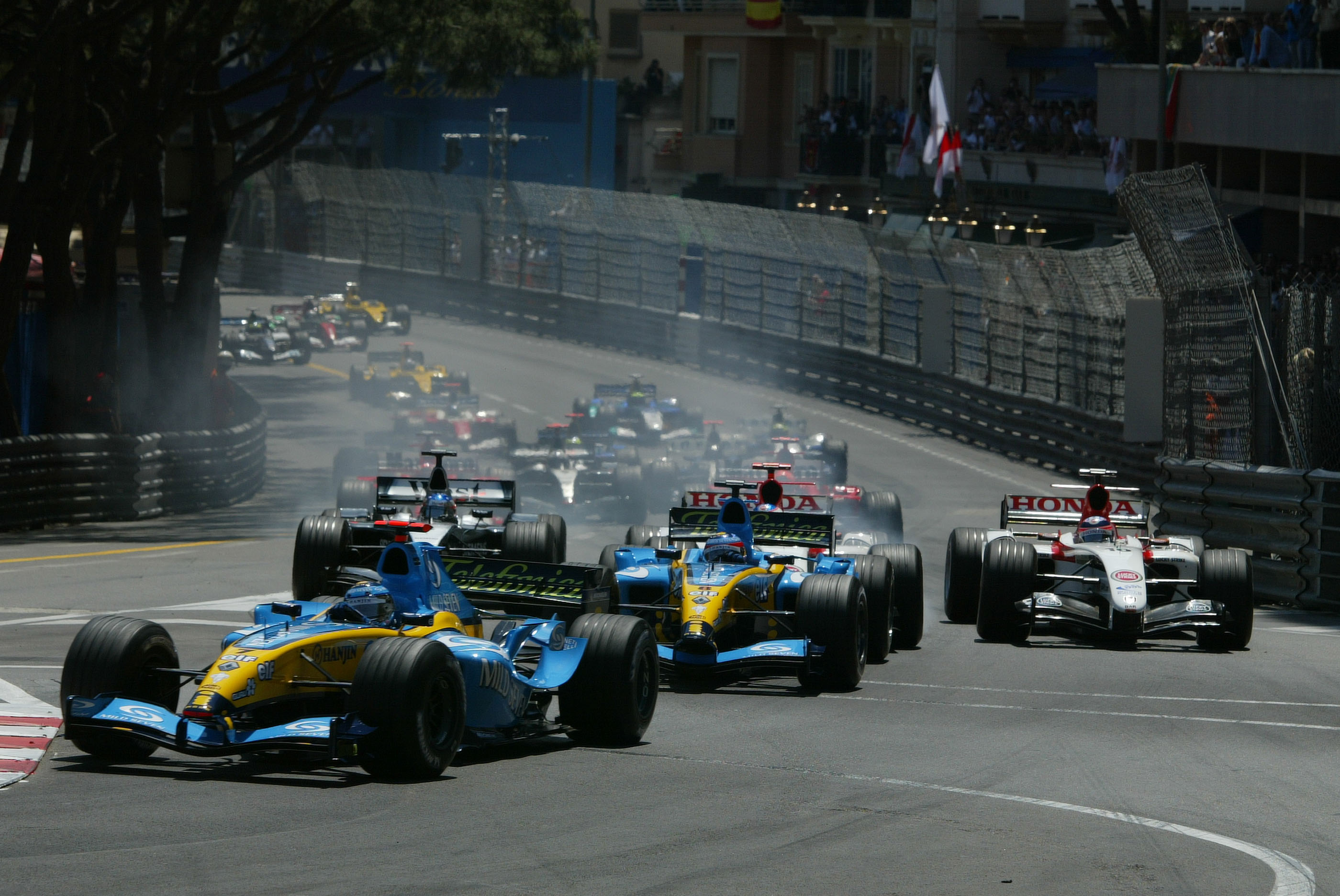
Even better, as far as Renault was concerned, was that Schumacher had been literally bumped down to sixth place – as Sato made an incredible getaway to squeeze between Raikkonen and him, rubbing wheels with the Ferrari as he did so, to go fourth. Raikkonen slipped inside the Ferrari into Ste Devote.
Two blue Renaults, two white BARs, a silver McLaren – and only then Schumacher. The Renaults sprinted impressively clear of the BARs, Alonso shadowing his team-mate’s every move but making no attempt to pass.
Alonso had his own ambitions about winning this race, of course, despite his team-mate’s pole. Fuelled one lap longer than Trulli, his game plan depended on being right behind him when the stops approached and then letting rip with a great in-lap.
Trulli’s game plan depended on preventing Alonso from being close enough to do that when the time came. Did he have the pace for that? We’d be finding out soon enough.
Sato’s car was trailing smoke on the overrun as he followed Button. The engine had got too hot sitting on the dummy grid and in the delays caused by Panis’ problems. He was desperately hoping he could bring the temperatures back down below the critical threshold now that the radiators were being fed with air.
But just as the Honda telemetry was showing the temperatures to be coming under control, the engine detonated as Sato drove through Tabac on the third lap, leaving a thick white fog of smoke through which it was impossible to see. Following drivers had to guess what was on the other side of the smoke and in the confusion Fisichella hit the back of Coulthard hard enough to flip the Sauber onto its side against the barriers.
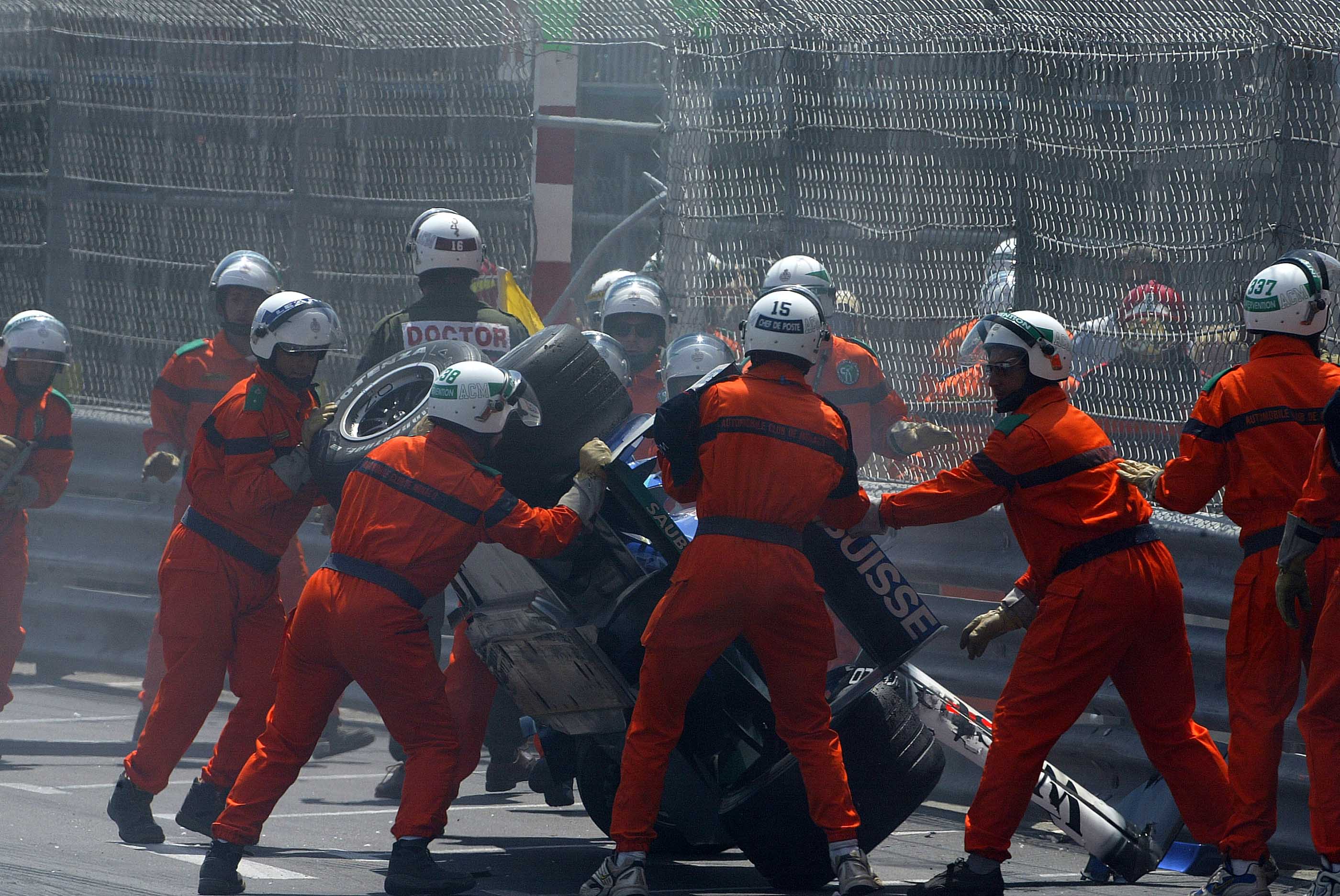
Amid such carnage, the safety car was deployed. It would stay out for four laps while the mess was cleared. Ralf Schumacher’s Williams had taken a hit too and pitted for attention before rejoining near the back, though it wouldn’t be long before Ralf began experiencing difficulty with the gearbox.
The safety car had wiped what had been a three-second gap between the Renaults and Button – and had removed one of the cars between them and Schumacher. So the incident had been good news for Ferrari, bad for Renault.
Nonetheless, on the restart the Renaults again put immediate distance on Button who in turn was pulling ever-further clear of Raikkonen. Schumacher, keen to keep his tyres in good shape, just patiently followed the McLaren and hoped it was not fuelled up very heavily. It wasn’t.
Button was the first of the leaders in for fuel and tyres, on lap 18. Raikkonen followed in a lap later. This gave Schumacher a clear track for the first time – and we got to see just how much pace the Ferrari had. Raikkonen had been lapping in the mid-16, with the Renaults in the high 1m 15s. Schumacher was straight down to high-14s and subsequently mid-14s, despite his greater fuel load. He was at this stage just over eight seconds adrift of the leader.
Schumacher’s pace was one of the two key challenges facing Trulli. The other was his team-mate. It was now time increase the pace and as he stepped it up, Alonso was unable to respond. Trulli got the gap to Alonso out to four seconds over the next few laps in an extremely impressive display.
“Sometimes Fernando was pushing me,” reported Trulli later, “but then I eventually responded. I knew I was quicker.” That was more than enough gap to prevent Alonso from using his extra low-fuel lap to leapfrog him.
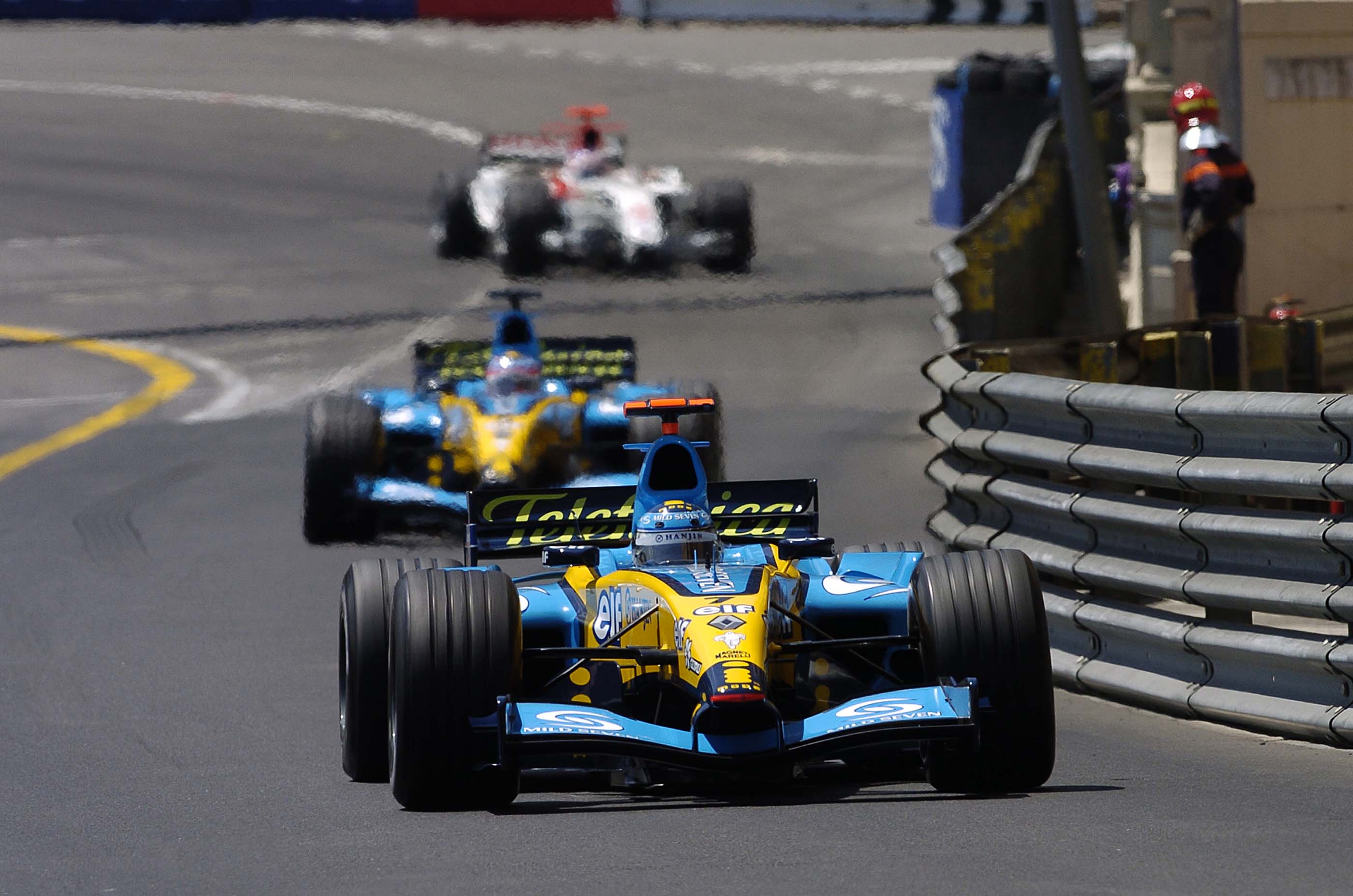
That gap also allowed Symonds to tweak his strategy, putting a little more fuel in than originally planned for the second stint.
“I was worried about Ferrari,” said Symonds. “On the hard tyre I was concerned about their pace at the end of the stint. The only thing we could do was to stay out long and try to match them. I decided to push Jarno out as far as we could.”
The risk of this was that Trulli’s reduced speed from the heavier load and the extra time in the pits might be enough to get Schumacher ahead after his first stop.
It depended on how much more fuel Schumacher still had in his tanks as the Renaults came in on lap 24 (Trulli) and 25 (Alonso). As it happened, not enough. Schumacher rejoined from his lap 26 stop, having leapfrogged past Raikkonen and Button, but still trailing the Renaults.
In the Ferrari pits Brawn, having noted the Trulli rig time, ensured that Schumacher was fuelled even longer to the second stops.
A fascinating game of strategy was playing out. Could Ferrari engineer that record-breaking sixth consecutive victory, against the odds? Could Schumacher get close enough to be able to use his extra low-fuel laps towards the end of the stint to leapfrog past both Renaults? Would Alonso prevent Schumacher getting close enough to Trulli to make that possible, inadvertently or otherwise?
As Schumacher rejoined, Trulli led Alonso by three seconds, with Schumacher two seconds behind the second Renault – and fuelled longer than either of them. Here was the foundation of the stint that would surely decide the race’s outcome.
Trulli really was in magnificent form this weekend and despite a greater fuel load than Alonso proceeded to pull away from him. By the 30th lap he was 3.8s clear and slowly extending, with Schumacher about three seconds back from there and 2.5s in front of Button. Schumacher was just about holding onto Alonso but not making any inroads.
This was looking promising for Renault, but with the proviso that we didn’t yet know how much longer than them Schumacher could run before refuelling.
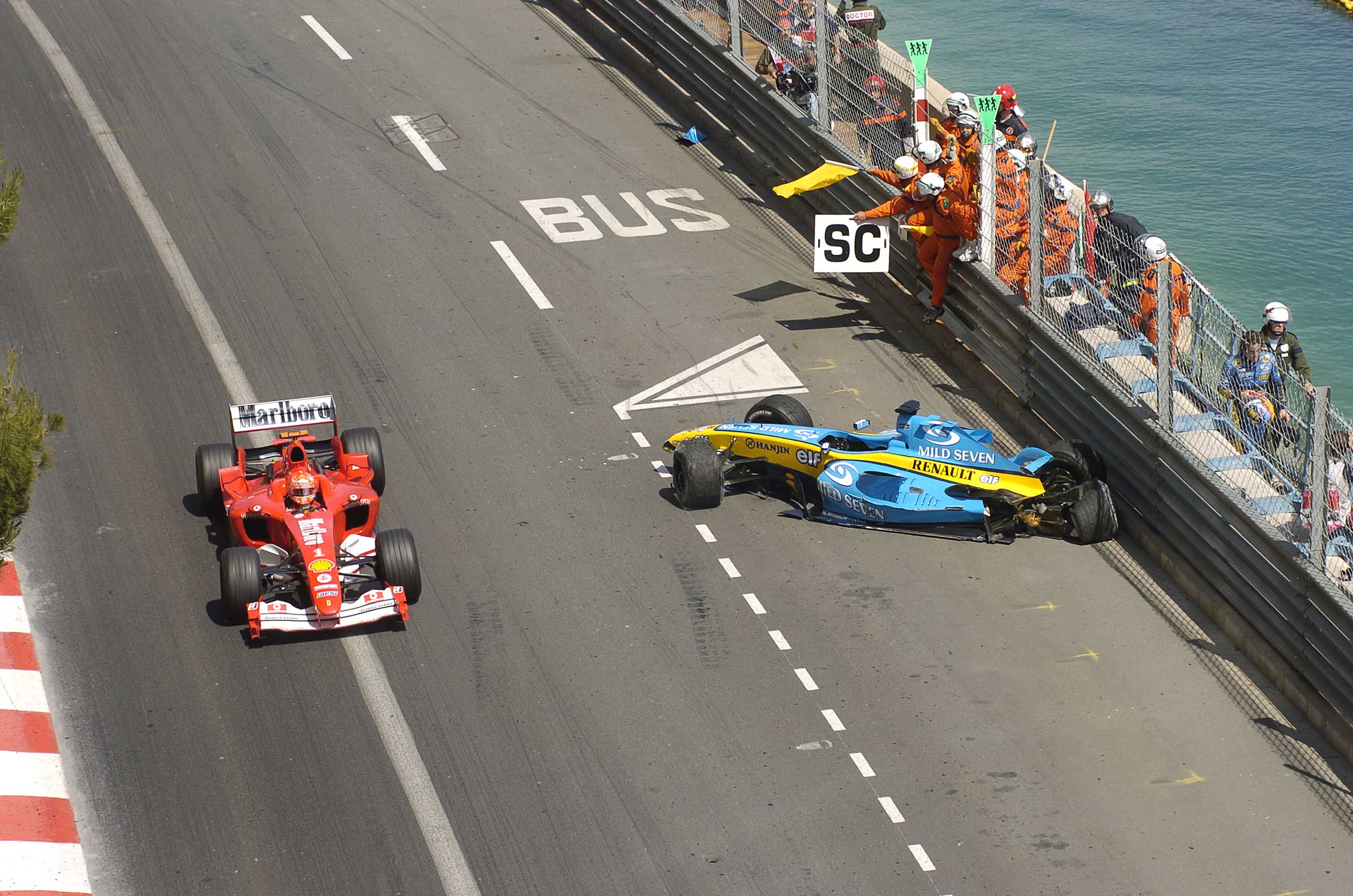
We didn’t get to find out. Further carnage was about to be unleashed on the race – and it would account, in separate but related incidents, for both Alonso and Schumacher.
On the 42nd lap Alonso came to lap Ralf Schumacher’s damaged Williams as they were approaching the tunnel. Ralf was just limping along, hoping to scrape into the points. He was missing a couple of gears. Seeing Alonso approach, he stayed to the right-hand side of the track.
This combined with the slow acceleration of the Williams led Alonso to believe Ralf was backing off for him. He wasn’t; he was slow only because of the missing gears. Not realising this, Alonso went to pass the Williams on the left as the tunnel kinks right then found the Williams was no longer slow and still fully alongside.
Forced onto the offline marbles, Alonso hit the barrier hard at around 180mph. He exited the tunnel mid-accident and proceeded to bounce off several sections of unyielding barrier, the destroyed Renault coming to rest just before the chicane. As Ralf passed, an incensed Alonso took time to give him the finger.
Out came the safety car again. This was close enough to Trulli’s stop window that Renault called him in – but they did so a little late, just after he’d already passed the pit entry.
Luckily he just managed to get past the safety car as it exited from the pitlane – otherwise a slow in-lap at safety car speeds would have lost him the lead to Button, who’d just pitted, and possibly to Schumacher later. Ferrari had left Michael out there. “We still had plenty of fuel in there,” explained Brawn.
The yet-to-stop Schumacher now led the queue behind the safety car. In between the Ferrari and Trulli was the lapped Williams of Montoya as the safety car turned off its lights to signal it was coming in at the end of the lap.
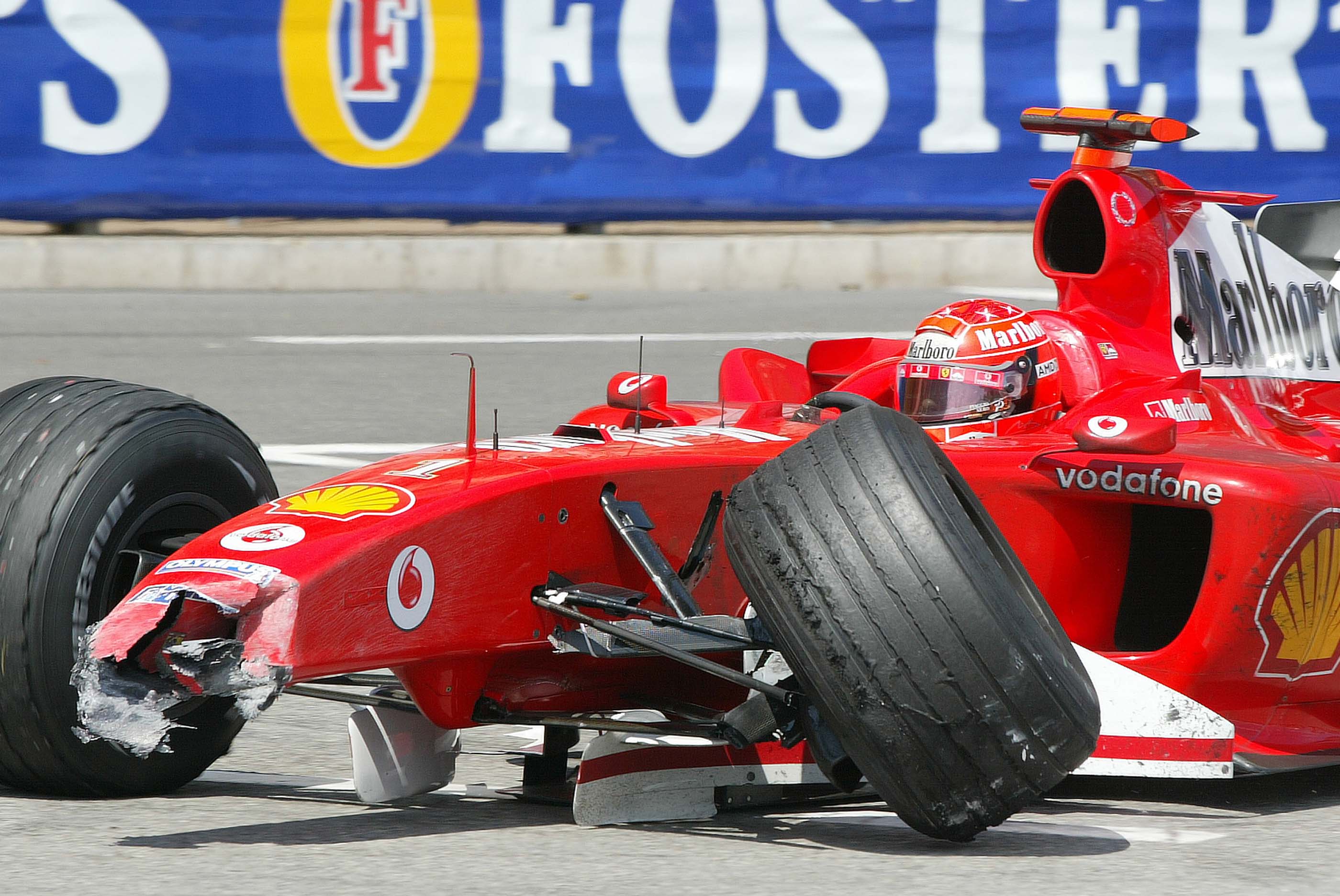
Through the tunnel Schumacher and Montoya were each accelerating and decelerating, trying to get heat into their brakes. Disastrously their accelerate/decelerate preparations got out of synch with each other. Montoya was caught out, rear-ending the Ferrari which then spun into the same barrier Alonso had initially hit, this folding the Ferrari’s left-front wheel back. As Schumacher trailed to the pits like this, so the safety car stayed out.
This rather took the sting out of the race and obviously came as a huge blow to Ferrari.
“The plan was Michael would have made a very fast sprint until his final stop,” explained Brawn, “and I think it might have been possible [to win]. Depending how quickly he could’ve gone. We weren’t going to win by doing the same thing as them.”
Trulli now surely had this race won as racing got underway again. But one guy who didn’t see it quite that way was Button. Every bit as determined to win his first grand prix as Trulli, he was initially frustrated to have slow-to-respond lapped cars between Trulli and him, but once he’d cleared them he began throwing caution to the wind and what had been a seven-second advantage for Trulli was quickly closed down.
Button admitted afterwards he was half-resigned to hitting the barriers at some stage, so hard was he pushing, feeling he had nothing to lose. It was enough to make the Renault pit nervous as Button got the gap down to almost nothing.
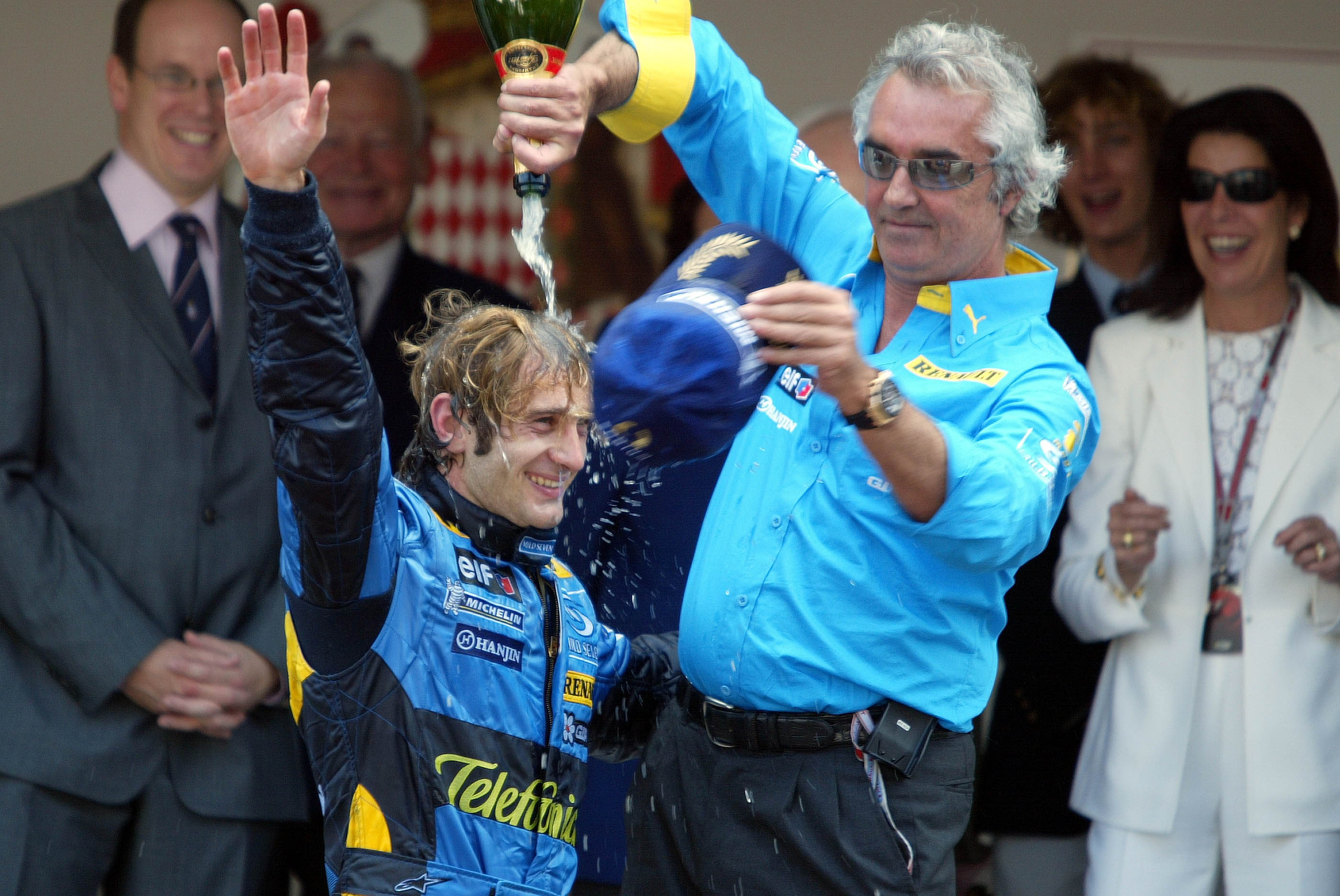
But Trulli had it all under control. He knew all he had to do was keep it clean and error-free and there was nowhere for Button to pass. It was a suitably spectacular end to a spectacular race as Trulli took that maiden grand prix victory in his ninth season of trying.
Would it be enough to secure his future with Renault, we wondered?
“I am relaxed and happy,” he answered, “and am talking with some teams, if not yet with Renault, which is strange. But if they want to talk I’m ready.”



